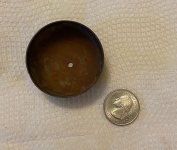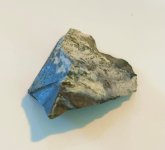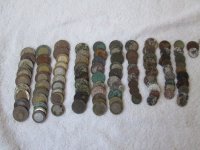SwampHunter
Sr. Member
- Mar 6, 2007
- 422
- 16
- Detector(s) used
- Minelab Xterra 70, Tesoro Silver uMax, Fisher 1265X, Garrett Ace 250, Garrett Pro Pointer
For several years I have put arrowheads in bags and wrote the location code on the bag. I have several hundred points and I want to display them but would still like to keep the history of where they were found. What is the easiest way to record the locations without defacing the points? I was thinking a copier would work well. What does everyone else do?
Upvote
0






